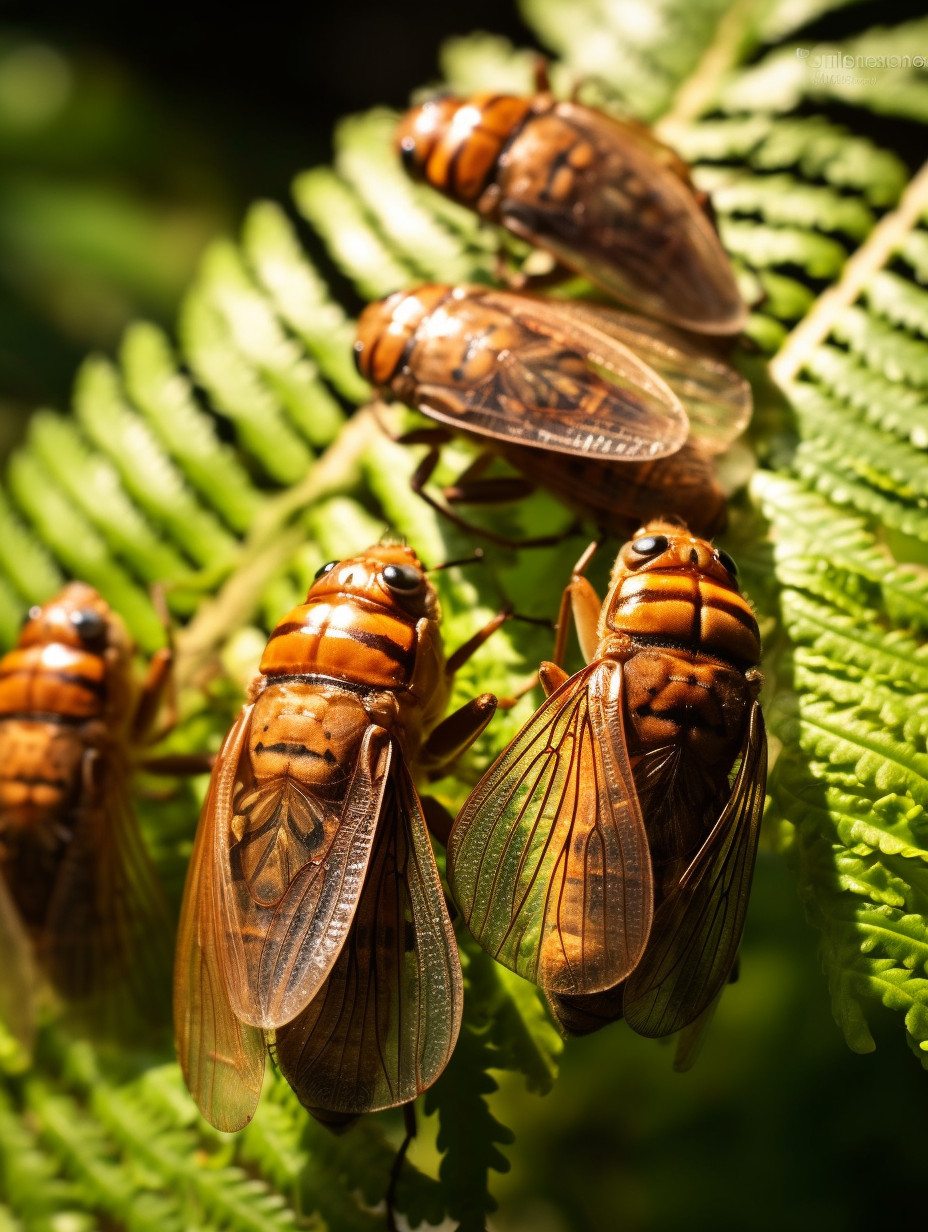Asheville – Brood XIV is back. The Farmers’ Almanac predicts that trillions of cicadas will emerge this year, with millions per acre likely in some areas. Should we be afraid?
A first encounter with these sticky, pervasive creatures can be unsettling. A hiker in Pisgah Forest may come face to face with them clinging to every available leaf or even have one attach itself to their leg. Do these creatures inject poison or lay eggs under the skin?
The scientific consensus is that they pose no risk to public health. They have no stingers and no jawbones. However, they can poke holes in people and attempt to suck sap from them, or they can poke with their pointy feet or ovipositors. While some naturalists claim otherwise, the EPA assures us that cicadas cannot lay eggs in the skin of humans, pets, or farm animals. The agency also confirms that they do not carry diseases. If one lands on you, a simple nudge is usually enough to shoo it away.
The pervasiveness of these orange creatures can be so overwhelming that it masks the noise they create. Male cicadas gather, climb trees, and vibrate the sides of their abdomens to produce a loud, buzzing noise that attracts females, who have been known to mistake power tools for potential mates. A buzz of 90 dB is typical, but noises exceeding 100 dB are not uncommon. Prolonged exposure to sounds of 80-85 dB can cause hearing damage.
Some cicadas are annuals; they emerge every year but are green and less noisy, making them less noticeable. Periodical cicadas emerge either every 13 or 17 years, depending on their brood. Brood XIV emerges every 17 years. It hit Asheville loudly in 1993 but practically missed the area in 2008.
Cicadas spend most of their lives 4-8 inches underground, feeding on tree and plant roots until their designated year when, in spring, ground temperatures remain in the mid-60s for about five days, typically coinciding with the blooming of irises. Consequently, they will emerge in early April and continue to appear in waves lasting a couple of months in each area once the ground reaches hatching temperatures. So far this year, they have been spotted as far north as New England.
Life above ground is their grand finale; they live only a few weeks during daylight. They head for the trees, molt, buzz, and mate. Female cicadas lay eggs in the woody parts of trees or bushes. The cicadas then hatch as nymphs that burrow into the ground to repeat the cycle. It remains unknown how Helene’s destruction of so many trees will impact the local cicada population.
This year, cicadas have descended upon Asheville en masse in May. They’re buzzing in the woods, crawling in the grass, lying on pavement, and being traipsed into homes. They may even be found feeding on a prized rosebush. Does this mean they are eating, laying eggs, removing mites, or pruning?
Cicadas prefer trees, and their mouths are designed for sucking tree sap. If they are feeding on a vegetable or flower, they cannot consume much of it. In fact, creating small v-notches in bushes often serves to prune them. Nymphs also stimulate roots and aerate the soil surrounding trees. While trees can withstand egg-laying, garden plants and saplings may sustain damage; therefore, netting is recommended.
As a general rule, cicadas are as harmless to pets and farm animals as they are to humans. The main exception is that pets may try to eat cicadas, which could result in dyspepsia, allergic reactions, or even digestive blockages. It is best to keep furry friends away from cicada hotspots or exercise them early or late in the day when cicadas are less active. Amphibians and birds can generally consume cicadas as part of their normal diet.

